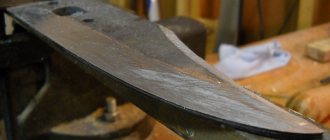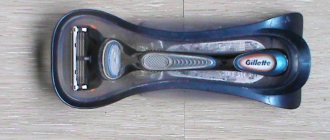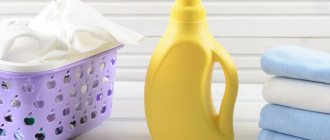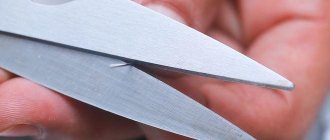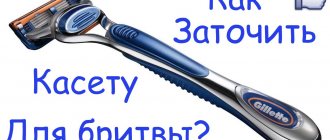Even for an expensive knife, the warranty for factory sharpening rarely exceeds a year, so the issue of restoring the sharpness of the blade always remains relevant. Not every knife sharpening device can properly straighten the blade of a tableware, travel or kitchen utensil. Let's figure out what auxiliary devices exist, how to choose the right tool and how to make it yourself.
Even the highest quality tools need sharpening Source remontkit.ru
Sharpening theory: profile and type
The blade profile (geometry) refers to the contour formed by sharpening. The profile outlines the part of the blade that will be in contact with the material while using the knife. Different tools have different blades and their own characteristic profile.
Its shape is related to the properties of the material used and the purpose of the tool. Using blade processing, the following types of profiles are formed:
- A simple blunt wedge. The blade is durable, but rough. It creates significant cutting resistance, and cutting rather viscous materials leaves a ragged mark.
- Sharp wedge. It is poorly suited for cutting, quickly becomes dull, and may chip. When cutting tough or fibrous materials, the result may be worse than with a dull blade due to high friction and cutting resistance.
- Ogival (bullet-shaped). The slopes (the sides of the cut line) have a characteristic convex shape. Such a blade is expensive and difficult to make even in production conditions. Tools with a bullet-shaped sharpening are made for special equipment (for example, medical equipment, when studying the thinnest tissue sections).
Model of a desktop sharpener with the ability to change the sharpening angle Source ytimg.com
- Faceted. Faceted geometry is used for disposable safety razor blades. The cutting part ends with edges (straight segments). Hex sharpening is considered universal. A profile with 3-4 edges is suitable for coarse hair, with eight – for the finest hair.
The most common is traditional double-sided sharpening; its variety is lens sharpening. It has high cutting efficiency and is considered the best choice of blade options. However, it is quite difficult to implement, which increases the cost of finished products, regardless of whether it is a kitchen tool, hunting, folding or tourist. There are knives with other, more specific blade shapes that determine the functionality and ease of use of the tool.
Sharpening theory: angle
Each specific blade has its own area of application, even if it is kitchen appliances. During manufacturing, they are sharpened at different angles, which is especially noticeable on new tools (after manual sharpening of knives, the differences often disappear).
Blade parameters affecting its functionality Source klinok.zlatoff.ru
The sharpening angle is a fundamental characteristic. It is always indicated in half, since many products are sharpened on one side (for example, a bayonet). The purpose of the knives can be determined by the following angle parameters:
- 10-15°. Straight razors, medical scalpels, and tools for artistic carving are taken to the sharpest corner. This sharpening makes it easy to cut hairs, but quickly becomes dull when trying to cut unsuitable material.
- 15-20°. This is how food tools, vegetable and pastry (cake) knives are sharpened.
- 20-25°. The angle is typical for bread and fillet knives (although on fillet varieties the angle is often adjusted to 15°).
- 25-30° (sometimes up to 40°). The corner is torn out for a hiking and hunting tool. The edge is sharp enough to cut through wood, open a tin can, or chop a bone.
- 30-35°. Meaning inherent in general purpose household products.
- 35-40°. Sharpening is performed on specialized (carpentry) tools, axes, shoe knives.
Full and half sharpening angle Source 2proraba.com
- 30-50°. This angle is typical for a special-purpose tool, such as a machete. You won’t be able to cut bread evenly with its help, but it can deal with thick undergrowth and vines just fine.
There are blades with different types of sharpening in different parts of the blade. Such a tool becomes more versatile in use, but it is much more difficult to manufacture. The angle of sharpening determines how convenient and useful the knife will be. It becomes clear that the correct device for sharpening knives should allow you to set the required sharpening angle. This is the main difficulty in its manufacture.
Other scissors...
Manual and mechanical, of various designs - the knife-loving public has come up with a lot of things, but personally I respect only two varieties.
Firstly, the grinder. This is a belt surface grinding machine that allows you to perform a variety of operations - from sharpening a blade to making a knife (and other useful things made of wood and metal) in general.
Making a grinder with your own hands is especially chic; many topics are devoted to this on specialized forums. With proper practice, sharpening a knife with this device is literally a matter of minutes. I don't have a grinder, but I want one. Of course, there is nowhere to put it... But I still want to.
Secondly, musat. In essence, it is a round (less often semicircular or oval) file with a very fine notch. Musats are made of steel (including diamond-coated ones) and metal-ceramic.
Despite all its primitiveness, it is the musat that is the primary tool for straightening knives in the kitchen. However, it all depends on practice: in the same way, it is necessary to maintain a constant correct angle in relation to the blade. Whether to steer the blade towards yourself or away from you is your own choice. The main thing is to develop the correct movement.
I almost never use sharpeners and don’t see much point in them. It will be interesting - I'll tell you next time.
Optimal one-and-a-half sharpening
Almost all (except special) knives are sharpened with a one-and-a-half profile during the manufacturing process. During operation, such a blade is easy to straighten, and it is suitable for household work with a variety of materials. For blades with one and a half sharpening, it is much easier to make a sharpener, since there are no edges in the profile geometry.
A simple way to restore sharpness to a blade Source ytimg.com
See also: Catalog of companies that specialize in the reconstruction and rebuilding of houses
The straightening and finishing of blades with one-and-a-half sharpening is carried out using a sharpening device and an abrasive. Abrasives vary in material and grain size. The abrasive number indicates the number of grains per square millimeter, that is, the degree of grinding of the metal surface. Processing is performed depending on the purpose of the tool:
- For straightening and finishing kitchen tools, abrasive No. 800-1100 is used.
- If the quality of the cut is important (for example, for a straight razor), pre-treatment with an abrasive is carried out. Then the surface of the blade is polished using a leather whetstone until it is mirror smooth. GOI paste for fine or fine polishing (dark green color) will help you get the desired effect.
- Finishing is usually not used for tourist (hiking) and hunting knives. Firstly, with such a tool it is often necessary not to cut, but to chop or file, and a knife copes with this more easily without finishing. Secondly, a cut on the skin from such a weapon is not smooth, but slightly ragged, which reduces bleeding, speeds up healing and reduces the likelihood of infection.
Compact mechanical sharpener Source ice-people.ru
Cautions
Sharpening knives in the house is a man's job. In any case, that’s what our women say. For this reason, sooner or later you have to learn it. For beginners, I want to leave a warning - please make sure that your fingers remain off the edge of the sharpening stone, not in the path of the blade. A knife sliding across a soap bar leaves deep cuts.
You can learn all movements by moving from simple to complex. It’s worth practicing on small knives, and then moving on to larger ones.
For high-quality sharpening, you need to keep the block tilted away from you.
I was glad to be useful to everyone facing this problem. Share your experience with your friends on social networks - let them also learn about my technique. If sometimes difficulties arise in solving everyday issues, follow my publications. I will always tell you how to find a simple way out.
What to sharpen: grit
The main characteristic of whetstones (brushes) used for sharpening knives is grain size. It is designated differently in different countries; It is more convenient to define grain size as the number of grains per unit area, but the designation in English terminology is also accepted. The classification of stone grain size is as follows:
- Rough (coarse) stone. Sharpening is carried out using sharpening stones No. 300-350. The coarse abrasive helps form the correct angle (geometry). Often used if the cutting edge has visible damage.
- Medium. For it, choose abrasive No. 400-500. The metal surface is ground to the required smoothness.
- Fine. The most common type of material suitable for household use. Restores the sharpness of knives that have become dull during normal use.
- Very fine (extra or ultra fine). Final finishing is carried out if necessary; The connections are polished to a mirror finish.
Sharpening stones with different grain sizes Source top-nozhi.ru
What to sharpen: a variety of materials
Sharpening stones can be divided into materials of natural and artificial origin. Natural stones are slates, quartz, chalcedony and corundum of various types and colors (for example, black Brazilian slate). They wear down faster than their artificial counterparts; the grain size is often uneven and rarely fine. Artificial ones include ceramic and diamond varieties.
The most durable and hard sharpening device for knives is considered to be a diamond whetstone. It is based on metal or plastic, with a thin layer of diamond coating applied on top. The device cannot be called cheap, but it will serve for a very long time, since it practically does not wear down. The diamond stone needs time to grind in and produce excellent results, and can be cleaned under running water.
The market offers technological varieties of material, for example, CBN sharpening stones. They have a continuous working layer made of cubic boron nitride, are characterized by high hardness and resistance to the chemical components of alloys and steels.
Stones with two types of grain size Source ytimg.com
The most convenient type of whetstone is an elongated whetstone, as this makes the sharpening process easier. Ideally, the length of the bar should be greater than the length of the blade. At home, it is enough to have two medium-grained bars (different), and one or two fine-grained ones. The option with double grain has proven itself well; on one side it is coarse, on the other it is finer (for example, grain 125/100).
To improve the quality of sharpening, natural stone is moistened with water (or soaked in it for a short time) before use. Water is absorbed into the structure of the material, and during operation it is released and mixed with particles separated under the pressure of the blade. A mixture of water and abrasive forms a paste that improves sharpening quality.
Water can be replaced with mineral oil. Knives are always sharpened using oil on Arkansas stone, which has different textures. Hard varieties are used for additional grinding and the sharpest sharpening, medium - for sharpening the tool, soft - for quick grinding. After work, Arkansas stone is cleaned with a brush, hot water and soap.
Wetting with water increases work efficiency Source prom.st
How to test the sharpness
Checking the sharpness of the blade is carried out in several proven ways:
- paper - hold the sheet with one hand and strip the paper with the other. With sufficient sharpness, cutting will go like clockwork;
- tomato - place the vegetable on the table and cut horizontally;
- on hairs - carefully press the blade to the skin of your hand and lightly run through the hair on it. If the “epilation” is successful, then the blade is sharp.
Checking knives on tomatoes.
Sharpening devices, practical at home
The list of sharpening devices used in everyday life includes hand-held devices. A popular option is musat. Professional chefs use it to quickly sharpen (sharpen) a knife that has become slightly dull. Musat looks like a long rod with a round cross-section and a handle. It is convenient for beginners to use, but only if a minor correction is needed. If the blade is completely dull, more radical action will be required.
A mechanical sharpener is designed to improve the blades of kitchen knives; it sets the optimal sharpening angle. The design consists of a plastic case in which the sharpening discs are hidden. The device can be equipped with several holes, and they are used for both sharpening and straightening.
There are models designed for sharpening scissors and bread knives with a saw-tooth edge (serrated). Mechanical devices are easy to use, affordable in price, and the result is achieved without much effort. A significant disadvantage is the low quality; the blade quickly becomes dull and the process has to be repeated.
Musat is a professional editing tool Source stockfood.com
Electric sharpeners (machines) are found in home kitchens much less frequently than their mechanical counterparts. The devices are designed for household and professional use and do not require special skills. They are a universal and effective tool for owners who prefer simplicity and speed of the process (it only takes a couple of minutes).
Main types of blades
Before you start learning how to sharpen blades, you need to know what types of blades there are. Different types of steel have some nuances:
- Carbon steel. The material is an alloy of carbon and iron. They are easy to sharpen and maintain their sharpness for a long time. People are attracted by the affordable price. Tools made from this material quickly rust in an acidic environment.
- Low carbon stainless steel. They are a compound of chromium, iron, carbon. Compared to carbon steel, this material dulls quickly due to its low hardness. The main advantage of stainless steel is its resistance to rust formation.
- Damascus steel. Blades made of this material are multi-layered products that have an unusual pattern on their surface.
- High carbon stainless steel. High carbon content, plus the addition of molybdenum and vanadium make this material more durable than conventional stainless steel. The products dull slowly and are protected from corrosion.
Ceramic blades belong to a separate group. This material has a high sharpness from the factory, which does not dull over a long period of time. However, ceramic tools are fragile and are not resistant to strong impacts, falls, or the application of breaking force.
Video description
About the classic homemade sharpener in the following video:
Electric machines operate on mains power; special guides allow you to sharpen the blade in compliance with the sharpening angle, so that the knife remains sharp for a long time. Sharpening is carried out using flexible abrasive belts; some devices are supplemented with abrasive discs with preset sharpening angles. All this allows you to sharpen not only straight blades, but also more complex blades: fillet, curved, with a hook.
Many owners do without expensive tools. When the need arises to sharpen a blade, and specialized tools are not available, emery for sharpening knives or a wooden block is used. Owners of a tabletop (grinding) sharpening machine do not have problems with dull knives. The work can also be done by carpentry grinding machines in which the saw blade can be replaced with a grinding wheel.
The simplest device for a certain angle Source mtdata.ru
Tips for sharpening knives quickly
There are times in life when, finding yourself in nature, you need to sharpen a dull knife, but there is no opportunity to use a sharpening tool. Some tips that can help in this situation:
- For editing, cobblestone is suitable as an abrasive stone. By choosing the right angle and having experience in editing the blade, you can achieve a decent result with it;
- you can use the second knife as a grinder;
- glass and ceramic products (back side of the plate) can act as a sharpening stone;
- A tightened leather belt can be a substitute for musat; you won’t be able to achieve much sharpness, but the blade will polish “excellent.”
Choose good knives and take care of them. In return, they will “thank you” with high-quality and long-term work.
Homemade devices
Since professional sharpening devices cost a lot of money, many owners make such devices on their own. The designs of homemade knife sharpening machines presented on the Internet are divided into several main types.
Common knife sharpener design Source odstroy.ru
A practical solution is those options that provide the ability to set the desired sharpening angle, depending on the type of knife (kitchen, tourist, universal, hunter or survivalist knife).
Popular devices are those in which the knife is fixed motionless, and the abrasive surface (the same sandpaper) is fixed at the required angle. After adjusting the angle, all that remains is to sharpen the blade, periodically removing waste so that it does not spoil the cutting edge.
Some craftsmen copy the design of the factory model, making a sharpener in which the bars are hidden in a body with a hole, while one abrasive sharpens the edge, the other polishes it. Devices are made in which a block is fixedly fixed, and the performer remains to control the vertical movement of the knife, which is quite simple with a certain skill.
Diagram of a simple sharpener Source bassin.ru
Why does the blade become dull?
There are a number of factors that influence the process of dulling a cutting edge:
- Excessive force transmitted to the tool when cutting. This causes the blade to bend.
- Incorrect turning process.
- Cutting hard materials.
- Improper storage.
- Impacts against metal objects.
- Destruction of metal due to corrosion.
Blacksmiths do not recommend washing knives under hot water. This is due to the fact that the metal is affected by aggressive salts, which reduce the sharpness.
Briefly about the main thing
Sharpening a knife is a necessary operation, no matter how expensive and high quality it is. When the blade loses its former sharpness, you have to resort to manual or machine sharpening. To restore the functionality of the knife, it is important to know what the sharpening angle should be. Its value depends on the method of using the blade, the shape of the cutting edge, and the material.
For manual sharpening, sharpening stones are used. In order not to spoil the blade, it is important to choose the right characteristics of the bar: grain size and material. An easier way to sharpen a knife is to use a mechanical or electric sharpener.
At home, alternative solutions are often found: they use sandpaper and construction power tools (for example, a grinder). If desired, you can make a simple sharpener with fixation of the knife or sharpening surface.
Let's sum it up
If you want your knives to be impeccably sharp, then it is better to opt for water-based sharpening stones. True, this will require you to spend more time and get used to it a little.
If you are not too picky about the sharpness of your knife and don’t want to spend a lot of time sharpening it, choose manual knife sharpeners.
If you need frequent sharpening or you have ceramic kitchen knives, then you should choose an electric sharpening machine. It will serve you for a long time and will not take much time to sharpen, although it will take up more space in the kitchen.
Follow all the above recommendations and your knives will be like new for a long time!



